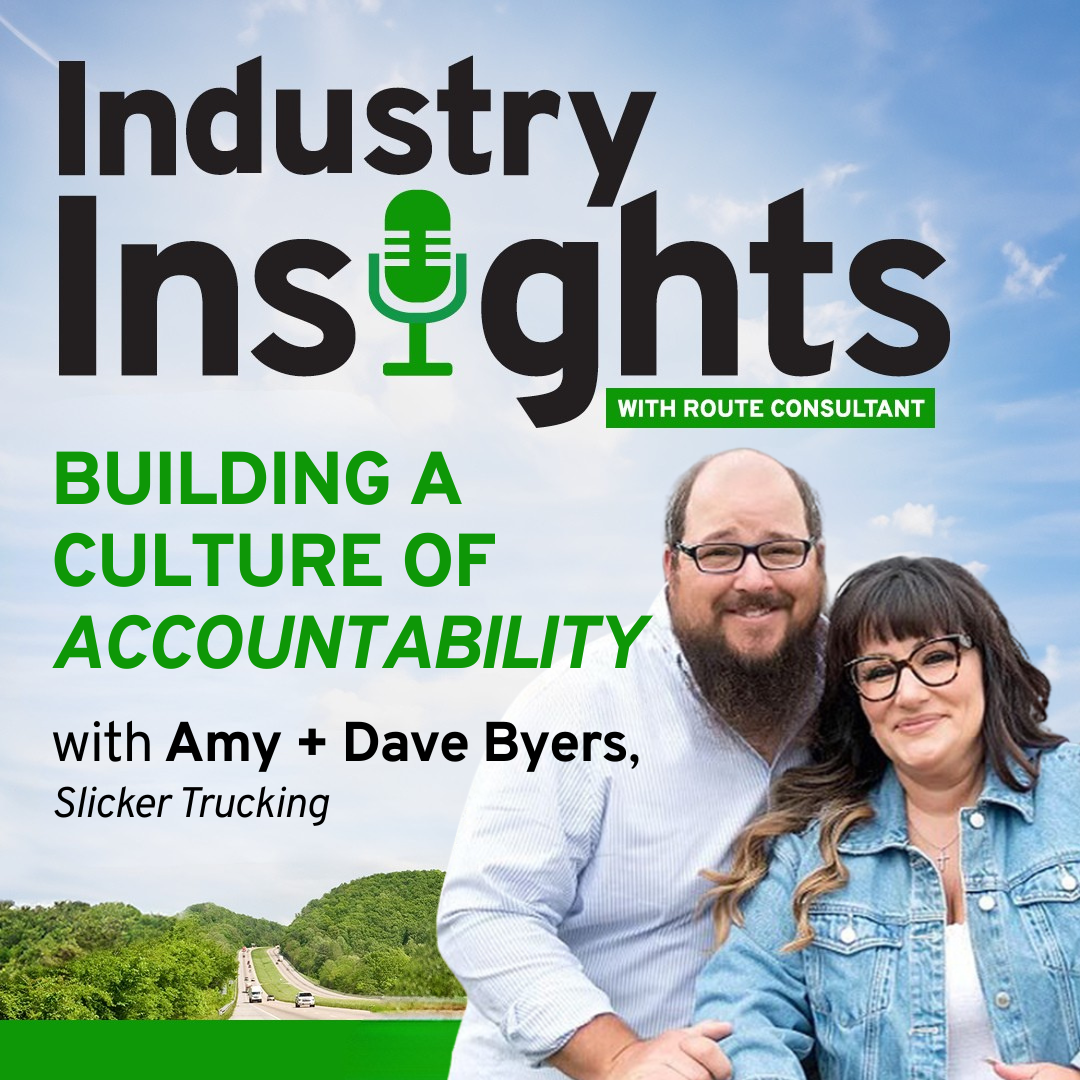
Industry Insights
with Route Consultant
Welcome to Industry Insights with Route Consultant—your front-row seat to the fast-moving world of logistics and beyond. Each week, we bring you game-changing insights, real-world strategies, and fresh perspectives to fuel smarter investments and build stronger businesses. Join us as we sit down with expert guests to explore emerging trends and pressing topics across a wide range of industries.
Latest Episodes
Explore All Industry Articles + Videos
The Differences Between Amazon Routes and FedEx Routes
With the increasing growth in the e-commerce delivery space, many potential FedEx Ground investors often ask if Amazon is a threat to their success. The answer? No.
Understand How Geography Impacts FedEx Routes for Sale
As you evaluate potential FedEx Ground routes for sale as an investment, you need to consider the financial implications of each route’s geography. Routes that are more rural or more urban have specific challenges and benefits. Planning for the geographic impact of a route in advance will better position you to maximize revenue.
Why Are There So Many Bread Routes for Sale?
Independent bread route contractors play a vital role in the distribution of fresh bread and bakery products to various retail outlets and establishments. Just like other independent contractor operations such as FedEx Ground and Amazon, these businesses can be sold from one party to another. Every business in the world has cycles, and there are many different reasons why a route owner may choose to sell their business. In this blog, we will explore what some of those key reasons are and the factors that contribute to this decision.
Employee Retention Credit
Route Consultant partners with Silicon Ledger to support contractors in applying for the Employee Retention Tax Credit (ERTC) or applying for Remediation. The ERTC is a stimulus program introduced and passed into law as a result of Covid-19 and the Cares Act. The ERTC essentially compensates you for payroll spent on employees during 2020 and 2021.
Differences Between FedEx Ground Routes and Bread Routes
Entrepreneurs seeking opportunities in the e-commerce logistics and package delivery industries often come across various types of delivery routes, including FedEx Ground routes and bread routes. While both offer unique advantages, it's essential to understand the key differences between them to make an informed decision. In this blog, we will highlight some of the specific differences between FedEx Ground routes and bread routes, exploring their operations, requirements, and potential for success.
Insurance Requirements for Bread Routes
Owning a bread route can be a rewarding business opportunity—but it also comes with important responsibilities. One of the most critical is maintaining the right commercial insurance coverage. Whether you're considering buying a bread route or already own one, understanding the insurance requirements set by your supplier or distributor is essential to protect your investment, operate legally, and ensure uninterrupted service to your accounts.
How Does a Bread Delivery Route Profit?
Understanding the different methods of payment available is crucial for both distributors and aspiring entrepreneurs looking to enter this industry. Specific compensation can vary widely depending on the size of each account and who the bread manufacturer is. It’s very common for a bread route to be compensated in different ways for different accounts. The better you can understand how a bread route is compensated, the better you can plan for success and maximize your profits.
How to Buy Bread Routes
Purchasing a bread route can be a great entrepreneurial business opportunity. However, in some cases, obtaining clean financial records and determining the true value of a bread route can be challenging. Many route owners may not have a clear understanding of their business's worth. In this blog, we will explore strategies and considerations for buying bread routes when clean financial records are hard to come by and route owners lack a comprehensive understanding of their business's value. Let's delve into the details!
The Limitations and Benefits of Scale for FedEx Ground Routes
Every FedEx Ground terminal serves a defined geographic territory. FedEx Ground closely monitors—and prevents via scale requirements—any contractor/entity from growing too large or too small within a single terminal. They do so by prescribing the number of daily stops an entity can make as a percent of all terminal stops.
How to Raise Capital and Fund the Purchase of FedEx Ground Businesses
FedEx Ground businesses range in price depending on the number of routes, demand, profitability, and the health of the fleet. Knowing how to raise capital to fund FedEx operations is key to growing and being successful in this space.
P&D “Qual Cert” Driver Training Program
Driver recruiting is a challenging part of being a Contractor, especially finding candidates who meet FedEx Ground’s requirements. FedEx Ground has announced new changes to Schedule I of the ISP Agreement regarding qualifications that P&D drivers must have to operate behind the wheel.
Why Are There So Many FedEx Routes for Sale?
At any given time, about 5% of the entire network is for sale on the open market. The market inventory can and will fluctuate throughout the year, but overall this is not a concerning number.
How Are FedEx Ground Contracts Structured?
You are charging FedEx for your services. You will negotiate each of the following charges with FedEx. All of these charges combined account for money flowing into your business. It’s critical you understand how and when those charges occur. And how you can increase your cash flow! Following is a quick overview of the charges you will negotiate as part of your Independent Service Provider (ISP) contract.
What’s Your FedEx Routes Business Worth?
Perhaps you are considering a partial sale to manage growth in your organization? Or, maybe you are starting to think about retirement? Whatever your reason, thinking proactively about the value of your business is critical to maximizing your return on investment. If you understand the present-day worth of your operation, you can make necessary edits so you don’t leave cash on the table when it’s time to sell.
What’s a FedEx Ground Route Worth? A Guide to Margins and Valuations
Healthy Fedex route businesses demonstrate profit margin ranging from 15-45%. Where you fall within that range depends on the type of routes you own, the composition of those routes, and how efficiently you manage your business expenses. strong P&D operation typically has a profit margin between 10-25%. Linehaul operations have a wider range of profit margins; typically, linehaul operations demonstrate margins between 20-45%.
How To Select a Broker to Sell Your FedEx Ground Routes
An experienced broker understands the full sales process and and can help you avoid snags or pitfalls along the way. This experience both reduces your time commitment during the sales process and ensures you receive a healthy, fair market price for your routes.
The Two Things You Need to Be Successful with FedEx Routes
This business is not rocket science. Your team needs to take a cardboard box from a warehouse to someone’s doorstep. It’s not more complicated than that. However, you need to have the people and the trucks to complete that goal over and over.
Can I Run FedEx Routes as an Absentee Owner?
When an investor chooses to purchase FedEx routes for sale at a terminal that is not close to the investor’s primary residence or place of business, we call the arrangement absentee ownership.
FedEx Ground Contract Termination and OTCs
Terminating a contract can provide serious service interruptions for FedEx Ground customers and is a critical issue. FedEx Ground aims to provide seamless delivery service for all areas of operation. This being said, it is rare for a contractor to lose their FedEx Ground contract. Further, contractors almost always receive opportunities to resolve issues in advance of a contract termination
How Linehaul Operates During Peak Season
Peak season is the time of year when contractors see additional package volume coming into the network, typically between the beginning of November and the end of December. FedEx has three incentives in place to encourage linehaul contractors to take on the additional volume while remaining profitable. These include peak mileage incentives, bonus points, and temporary run assignments.





















































